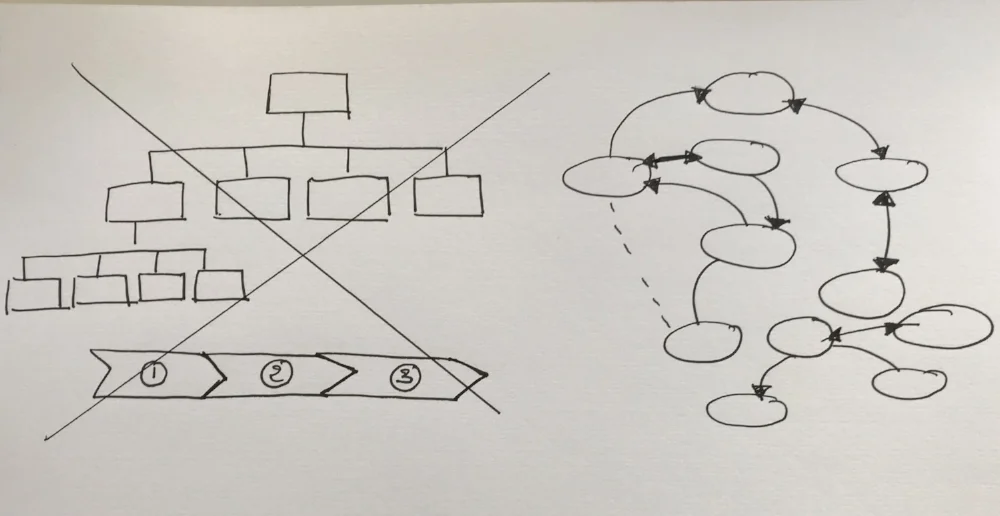Digital Thinking - explore your ecosystem
In a fast paced digital enterprise traditional scorecards are deemed insufficient. Metrics are required to track the impact of investments in innovation, how it enriches the value chain and how timely the progress is.
Same goes for strategic thinking and strategic planning especially if you try to project your company, its product portfolio in a new digital paradigm. I was privileged to be trusted by customers both leaders in their markets who had to tackle two different challenges :
attract companies in an innovation centre
add value to existing customers and attract new customers
Both customers wanted to think out of the box and more importantly be agile and fast. They were both open to pilots, test assumptions, make mistakes. One even said “if the only result is to fail, get an outstanding post mortem and understand we were off track this will be an OK result”.
It is important to set this context as in my opinion this open mindedness is a pre-requisite to what I am going to describe next.
In my last year of “unlearning” the rigid corporate set of rules and “exploring” the digital ecosystems across the world I was determined to apply creative approaches.
Changing and morphing links and relationships characterise a digital environment. Why ?
One of the key reasons is the availability and the ubiquity of information. The definition I use for information is qualified, intelligible and relevant data. Until this tipping point structures were built to source, interpret, organise and cascade information. Due to the availability and the ubiquity of information these structures are made obsolete. Let’s look at some :
- employees do not need the infamous org chart to understand the strategy of the company and how they can contribute to make this strategy successful. Do they need a boss ? maybe. They certainly need to exchange with other experts internally and externally to increase their own contribution and they need swift decision making if they can make them on their own or if their impact goes beyond what they can comprehend. How is this best organised ? In digital thinking certainly not in a org chart and maybe not in a full holacracy. Do all employees regardless of their statuses rely on an active ecosystem made of multiple relationships to succeed ? Certainly. I would even argue that the most and widely connected employees are the most performing ones. This is a topic for another article.
- equally when you think of situations or problems does your mind initially tackle it in a structured linear process ? It only takes a few beginner’s meditation sessions to realise that your mind naturally spreads all over the place. Who remembers the golden nuggets of white papers assuming they have read it ? Out of the 7 standard slides of the executive deck one graph generally sticks in the long run. Why constrain your brain power in a step by step approach especially when most likely your business environment grows more complex not less ?
Then what ? It is one thing to discard proven methods what alternatives do I propose ?
Working with an outstanding design thinking agency we developed the approach of ecosystem mapping. Studying the digital ecosystems across the world in my #wwdigitour it became very obvious to me that the management of all relationships and interconnections is key to both the success of an individual and a company.
Coming back to my customers in the mapping exercise :
- We consolidated the facts and data of the business environment or universe we were studyin
- We graphically represented all the players of the ecosystem they know and the relationships they understand
- We aligned the company top priorities and KPIs related to these priorities
- We identified “terra incognita” what they don’t know and where we need to further explore
- We scoped the areas of focus
This first mapping leads to serious facts findings through survey of experts, intensive searches.
In a second round we confirm or invalidate assumptions, complete the void of “terra incognita’ and most importantly highlight areas of opportunities such as :
- The new players that have to be brought into the ecosystem
- The existing relationships that are critical
- The existing relationships that are non-critical or even counter productive
and more depending on the business problem to solve
This ecosystem mapping is particularly useful for many purposes that vary on a case by case but a few examples are :
- focus your business development effort on meaningful opportunities
- enable your customer success managers with background information that is relevant to their customers
- evolve your product/services portfolio
- grow your network of partners for business with high growth potential
- attract stakeholders to build a value generating ecosystem (win/win for all)
The output of this exploration is very visual and is provided both in hard format (long posters) and software maps. Depending on how people work if they meet in an office pinning it on walls especially in public space will trigger great business discussion and engagement. In order to trigger collaboration you can propose that employees stick post-it with additional questions and input. This is only valid if something is done with it. Nothing stops you from displaying it on the walls of the board room, it will be remembered and you may trigger very fruitful strategic conversations .


